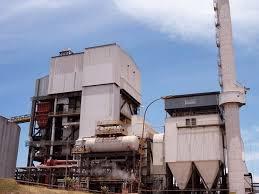Introduction
The US Circulating Fluid Bed (CFB) Boilers Market is witnessing significant growth as industries and utilities seek efficient and environmentally responsible power generation solutions. CFB boilers are known for their fuel flexibility, low emissions, and superior combustion efficiency. With the growing shift toward cleaner energy technologies and the utilization of diverse fuel sources such as biomass, lignite, and waste materials, the adoption of CFB boilers is increasing across industrial and utility sectors in the United States.
Market Drivers
Key drivers include the rising demand for energy-efficient and low-emission power generation systems. The ability of CFB boilers to use multiple fuel types, including renewables and low-grade coals, makes them an attractive option in the evolving US energy landscape. Stringent environmental regulations by the EPA on emissions of SOx, NOx, and CO₂ are further pushing industries toward cleaner combustion technologies. Industrial sectors such as chemicals, pulp and paper, and cement are increasingly adopting CFB systems to enhance energy recovery and reduce operational costs. The shift toward biomass co-firing and waste-to-energy projects also strengthens market expansion.
Market Challenges
Despite their advantages, high capital investment and installation costs pose a barrier for small and medium-scale industries. The complex design and operational requirements of CFB boilers demand specialized expertise for maintenance and optimization. Additionally, fluctuating fuel prices and evolving environmental policies create uncertainty for long-term project planning. Limited awareness about the lifecycle benefits of CFB technology among smaller operators also restricts widespread adoption.
Market Opportunities
Growing focus on decarbonization and the use of renewable fuels opens new opportunities for CFB boiler manufacturers in the US. Integration of digital control systems and IoT-based monitoring enhances boiler performance and predictive maintenance. Increasing investments in biomass and waste-derived fuel projects provide a favorable environment for CFB deployment. Manufacturers developing modular, compact, and low-emission CFB designs can capture growing industrial demand. Partnerships with utilities transitioning to sustainable energy sources further strengthen market prospects.
Regional Insights
The Midwest and Southeast regions lead the US market due to a strong industrial base and abundant biomass resources. States such as Texas, Ohio, and Georgia are witnessing growing adoption in manufacturing and power generation sectors. The Northeast, driven by stringent emission norms and modernization of older coal-based plants, also presents substantial opportunities. Government support for renewable integration and clean power initiatives further boosts regional deployment.
Future Outlook
The future of the US CFB Boilers Market will be shaped by the nation’s push toward low-carbon energy systems and efficiency-driven industrial modernization. Advanced CFB designs that support flexible fuel use and incorporate digital automation will gain momentum. As industries and utilities continue to pursue cleaner and more efficient energy technologies, CFB boilers are set to remain a cornerstone of sustainable power generation in the coming decade.
Conclusion
The US Circulating Fluid Bed Boilers Market stands at the intersection of efficiency, flexibility, and sustainability. With evolving regulations, renewable integration, and technological innovation, CFB boilers will continue to play a pivotal role in reducing emissions and supporting cleaner industrial and power generation operations.

